The Bridge on the River Kwai is a 1957 British-American epic war film directed by David Lean and based on the novel Le Pont de la Rivière Kwaï (1952) by Pierre Boulle. The film uses the historical setting of the construction of the Burma Railway in 1942–1943. The cast included William Holden, Jack Hawkins, Alec Guinness, and Sessue Hayakawa.
| The Bridge on the River Kwai | |
|---|---|
British theatrical release poster | |
| Directed by | David Lean |
| Produced by | Sam Spiegel |
| Screenplay by |
|
| Based on | The Bridge over the River Kwai by Pierre Boulle |
| Starring |
|
| Music by | Malcolm Arnold |
| Cinematography | Jack Hildyard |
| Edited by | Peter Taylor |
Production company | Horizon Pictures |
| Distributed by | Columbia Pictures |
Release date |
|
Running time | 161 minutes |
| Country | United Kingdom United States |
| Language | English |
| Budget | $2.8 million |
| Box office | $30.6 million (initial release) |
It was initially scripted by screenwriter Carl Foreman, who was later replaced by Michael Wilson. Both writers had to work in secret, as they were on the Hollywood blacklist and had fled to England in order to continue working. As a result, Boulle, who did not speak English, was credited and received the Academy Award for Best Adapted Screenplay; many years later, Foreman and Wilson posthumously received the Academy Award.
The film was widely praised, winning seven Academy Awards (including Best Picture) at the 30th Academy Awards. It used lush colour to bring out the British stiff upper lip of the colonel, played by Alec Guinness in an Oscar-winning performance. In 1997, the film was deemed "culturally, historically, or aesthetically significant" and selected for preservation in the National Film Registry by the United States Library of Congress. It has been included on the American Film Institute's list of best American films ever made. In 1999, the British Film Institute voted The Bridge on the River Kwai the 11th greatest British film of the 20th Century.
Many historical inaccuracies in the film have often been noted by eyewitnesses to the building of the real Burma Railway and historians.
Screenplay
In early 1943, British POWs arrive by train at a Japanese prison camp in Burma. The commandant, Colonel Saito, informs them that all prisoners, regardless of rank, are to work on the construction of a railway bridge over the River Kwai that will connect Bangkok and Rangoon. The senior British officer, Lieutenant Colonel Nicholson, informs Saito that the Geneva Conventions exempt officers from manual labour. Nicholson later forbids any escape attempts because they had been ordered by headquarters to surrender, and escapes could be seen as defiance of orders.
At the morning assembly, Nicholson orders his officers to remain behind when the enlisted men march off to work. Saito threatens to have them shot, but Nicholson refuses to back down. When Major Clipton, the British medical officer, warns Saito there are too many witnesses for him to get away with murder, Saito leaves the officers standing all day in the intense heat. That evening, the officers are placed in a punishment hut, while Nicholson is locked in an iron box.
Meanwhile, three prisoners attempt to escape. Two are shot dead, but United States Navy Commander Shears gets away, although badly wounded. He stumbles into a village of natives, who nurse him back to health and then help him leave by boat.
Meanwhile, the prisoners work as little as possible and sabotage whatever they can. Should Saito fail to meet his deadline, he would be obliged to commit ritual suicide. Desperate, he uses the anniversary of Japan's victory in the Russo-Japanese War as an excuse to save face and announces a general amnesty, releasing Nicholson and his officers and exempting them from manual labour.
Nicholson is shocked by the poor job being done by his men. Over the protests of some of his officers, he orders Captain Reeves and Major Hughes to design and build a proper bridge to maintain his men's morale. As the Japanese engineers had chosen a poor site, the original construction is abandoned and a new bridge begun downstream.
Shears is enjoying his hospital stay in Ceylon when British Major Warden invites him to join a mission to destroy the bridge before it is completed. Shears is so appalled, he confesses he is not an officer; he impersonated one, expecting better treatment from the Japanese. Warden responds that he already knew and that the American Navy agreed to transfer him to the British to avoid embarrassment. Realising he has no choice, Shears volunteers.
Meanwhile, Nicholson drives his men hard to complete the bridge on time. For him, its completion will exemplify the ingenuity and hard work of the British Army long after the war's end. When he asks that their Japanese counterparts pitch in as well, a resigned Saito replies that he has already given the order. Clipton expresses grave doubts about the sanity of Colonel Nicholson's efforts to build the bridge in order to show up his Japanese captors.
The four commandos parachute in, though one is killed on landing. Later, Warden is wounded in an encounter with a Japanese patrol and has to be carried on a litter. He, Shears, and Canadian Lieutenant Joyce reach the river in time with the assistance of Siamese women bearers and their village chief, Khun Yai. Under cover of darkness, Shears and Joyce plant explosives on the bridge towers below the water line.
A train carrying important dignitaries and soldiers is scheduled to be the first to cross the bridge the following day, so Warden waits to destroy both. However, by daybreak the water level has dropped, exposing the wire connecting the explosives to the detonator. Nicholson spots the wire and brings it to Saito's attention. As the train approaches, they hurry down to the riverbank to investigate.
Joyce, manning the detonator, breaks cover and stabs Saito to death. Nicholson yells for help, while attempting to stop Joyce from reaching the detonator. When Joyce is mortally wounded by Japanese fire, Shears swims across the river, but is himself shot. Recognising the dying Shears, Nicholson exclaims, "What have I done?" Warden fires a mortar, wounding Nicholson. The dying colonel stumbles towards the detonator and collapses on the plunger just in time to blow up the bridge and send the train hurtling into the river below. Warden turns toward the only survivors of the commando raid, the women bearers, and begs their forgiveness for having to kill Joyce and Shears, and throws the mortar launcher away in disgust, and prepares to leave. Clipton, observing the carnage, shakes his head muttering, "Madness!, Madness!".
- William Holden as Commander Shears
- Alec Guinness as Lieutenant Colonel Nicholson
- Jack Hawkins as Major Warden
- Sessue Hayakawa as Colonel Saito
- James Donald as Major Clipton
- Geoffrey Horne as Lieutenant Joyce
- André Morell as Colonel Green
- Peter Williams as Captain Reeves
- John Boxer as Major Hughes
- Percy Herbert as Private Grogan
- Harold Goodwin as Private Baker
- Ann Sears as Nurse
- Henry Okawa as Captain Kanematsu
- K. Katsumoto as Lieutenant Miura
- M.R.B. Chakrabandhu as Yai
Screenplay
The screenwriters, Carl Foreman and Michael Wilson, were on the Hollywood blacklist and, even though living in exile in England, could only work on the film in secret. The two did not collaborate on the script; Wilson took over after Lean was dissatisfied with Foreman's work. The official credit was given to Pierre Boulle (who did not speak English), and the resulting Oscar for Best Screenplay (Adaptation) was awarded to him. Only in 1984 did the Academy rectify the situation by retroactively awarding the Oscar to Foreman and Wilson, posthumously in both cases. Subsequent releases of the film finally gave them proper screen credit. David Lean himself also claimed that producer Sam Spiegel cheated him out of his rightful part in the credits since he had had a major hand in the script.
The film was relatively faithful to the novel, with two major exceptions. Shears, who is a British commando officer like Warden in the novel, became an American sailor who escapes from the POW camp. Also, in the novel, the bridge is not destroyed: the train plummets into the river from a secondary charge placed by Warden, but Nicholson (never realising "what have I done?") does not fall onto the plunger, and the bridge suffers only minor damage. Boulle nonetheless enjoyed the film version though he disagreed with its climax.
Filming
Many directors were considered for the project, among them John Ford, William Wyler, Howard Hawks, Fred Zinnemann, and Orson Welles (who was also offered a starring role).
The film was an international co-production between companies in Britain and the United States.
Director David Lean clashed with his cast members on multiple occasions, particularly Alec Guinness and James Donald, who thought the novel was anti-British. Lean had a lengthy row with Guinness over how to play the role of Nicholson; Guinness wanted to play the part with a sense of humour and sympathy, while Lean thought Nicholson should be "a bore." On another occasion, they argued over the scene where Nicholson reflects on his career in the army. Lean filmed the scene from behind Guinness and exploded in anger when Guinness asked him why he was doing this. After Guinness was done with the scene, Lean said, "Now you can all fuck off and go home, you English actors. Thank God that I'm starting work tomorrow with an American actor (William Holden)."
The film was made in Ceylon (now Sri Lanka). The bridge in the film was near Kitulgala.
Guinness later said that he subconsciously based his walk while emerging from "the Oven" on that of his eleven-year-old son Matthew, who was recovering from polio at the time, a disease that left him temporarily paralyzed from the waist down. Guinness later reflected on the scene, calling it the "finest piece of work" he had ever done.
Lean nearly drowned when he was swept away by the river current during a break from filming.
The filming of the bridge explosion was to be done on 10 March 1957, in the presence of S.W.R.D. Bandaranaike, then Prime Minister of Ceylon, and a team of government dignitaries. However, cameraman Freddy Ford was unable to get out of the way of the explosion in time, and Lean had to stop filming. The train crashed into a generator on the other side of the bridge and was wrecked. It was repaired in time to be blown up the next morning, with Bandaranaike and his entourage present.
The producers nearly suffered a catastrophe following the filming of the bridge explosion. To ensure they captured the one-time event, multiple cameras from several angles were used. Ordinarily, the film would have been taken by boat to London, but due to the Suez crisis this was impossible; therefore the film was taken by air freight. When the shipment failed to arrive in London, a worldwide search was undertaken. To t
Watch movie The Bridge On The River Kwai online on Amazon
Watch movie The Bridge On The River Kwai online
Watch The Movie On PrimeMithya Full HD Movie Download
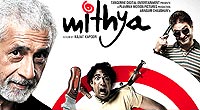
Shool Full HD Movie Download
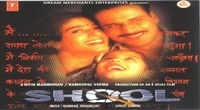
Ram Jaane Full HD Movie Download
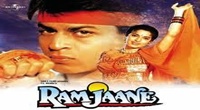
Sunehre Din Full HD Movie Download
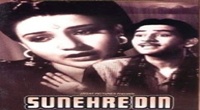
404 Full HD Movie Download

Zulm ka baadshah Full HD Movie Download
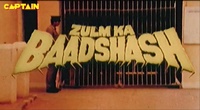
Gondya Martay Tangde Full HD Movie Download
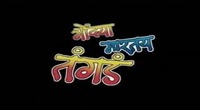
College Student Full HD Movie Download

Illarikam Full HD Movie Download
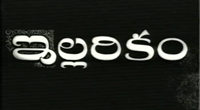
Adade Aadram Full HD Movie Download
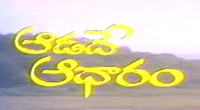
Chuttalunnaru Jagratta Full HD Movie Download
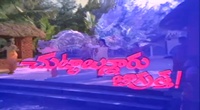
Poovilanghu Full HD Movie Download

Vaaname Ellai Full HD Movie Download

Level Cross Full HD Movie Download
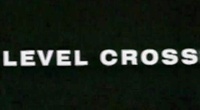
Madana Manjari Full HD Movie Download

Ee Tharam Nehru Full HD Movie Download
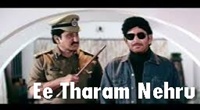
Maha Purushudu Full HD Movie Download
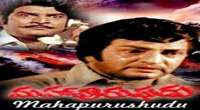
Gruha Lakshmi Full HD Movie Download
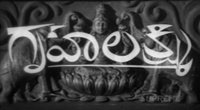
Aaina (1993) Full HD Movie Download
.jpg)
Ek Tha Tiger Full HD Movie Download
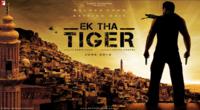
Jab Tak Hai Jaan (2012) Full HD Movie Download
.jpg)
Download latest Movie from bollywood
- 1> baaghi 3
- 2> THE SKY IS PINK MOVIE FULL STORY AND REVIEW
- 3> Luka Chuppi
- 4> TO ALL THE BOYS I’VE LOVED BEFORE
- 5> Kabir Singh
- 6> Street Dancer 3D
- 7> Simmba
- 8> Gone Girl
- 9> The Girl Who Lived
- 10> Ludo
- 11> DILWALE DULHANIA LE JAYENGE
- 12> GUILTY
- 13> The Godfather
- 14> Adventures of Rusty
- 15> Sooryavanshi
- 16> Satyameva Jayate 2
- 17> Thappad
- 18> Bhool Bhulaiyaa 2
- 19> KGFChapter 2
- 20> Mardaani 2
- 21> Pinjar
- 22> Shivaji maharaj
- 23> Ek Villian 2
- 24> Hungama 2
- 25> Divergent
- 26> Mumbai Saga
- 27> The Internship
- 28> HIT (telugu)
- 29> Panga
- 30> The perfect date
- 31> 16 December
- 32> Gopala Gopala (Telugu)
- 33> Brahmastra
- 34> Gangubai Kathiawadi
- 35> Manmadhudu
- 36> Nenu local
- 37> Mahanati
- 38> Shatamanam bavathi
- 39> Lagaan
- 40> After
- 41> MOM
- 42> Shamshera
- 43> Raguvaran BTech
- 44> Khakee
- 45> The villain
- 46> OM
- 47> Mr. perfect
- 48> Bueatifull mind
- 49> Hichki
- 50> Gabbar Singh
- 51> Jogi
- 52> Before Sunrise
- 53> Before Sunset
- 54> Before Midnight
- 55> The Big Bull
- 56> Top Gun: Maverick
- 57> The Purge
- 58> The Sky is Pink
- 59> Laxmmi Bomb
- 60> Sadak 2
- 61> Sufna
- 62> Prithviraj
- 63> PK
- 64> Coolie No 1(2020)
- 65> Black Widow
- 66> Dear Zindagi
- 67> Dil Bechara
- 68> PHIR HERA PHERI
- 69> WAR
- 70> Dostana
- 71> RRR: Roudram Ranam Rudhiram
- 72> Maidan
- 73> Dabbang 3
- 74> Chhalaang
- 75> life as we know it
- 76> SherShaah
- 77> Sandeep Aur Pinky Faraar
- 78> Event Horizon
- 79> 83
- 80> Radhe: Your Most Wanted Bhai
- 81> Gunjan Saxena: The Kargil Girl
- 82> Mr India
- 83> Vivah
- 84> Anokha Bandhan
- 85> Ghost
- 86> Bhoot: Part One - The Haunted Ship
- 87> Haseen Dilruba
- 88> Laal Singh Chaddha
- 89> Qismat
- 90> Rajput
- 91> Drive
- 92> Dil Chahta Hai
- 93> Dil Ki Baazi
- 94> Dil Ka Rishta
- 95> Teesri Manzil
- 96> Dil
- 97> Love Aaj Kal
- 98> Khaali Peeli
- 99> Bunty Aur Babli 2
- 100> Atrangi Re
- 101> Gulabo Sitabo
- 102> Jodi
- 103> Suraj Pe Mangal Bhari
- 104> Deewana
- 105> Attack
- 106> Sardar Udham Singh
- 107> Toofan
- 108> THE LOVEBIRDS
- 109> Jersey
- 110> Ginny Weds Sunny
- 111> Thalaivi
- 112> Shiddat
- 113> Angels vs Zombies
- 114> Koi Mil Gya
- 115> Thank God
- 116> Bhuj: The Pride of India
- 117> Hum Aapke Hain Kaun
- 118> The Platform
- 119> Bird Box
- 120> Roohi Afzana
- 121> Torbaaz
- 122> Nikamma
- 123> World War Z
- 124> Extraction
- 125> Train to Busan
- 126> Life of Pi
- 127> SHAADI MEIN JROOR AANA
- 128> Himmat Aur Mehnat
- 129> To All The Boys: P.S. I Still Love You
- 130> Mimi
- 131> Good Newwz
- 132> Shubh Mangal Zyada Saavdhan
- 133> Raabta
- 134> Harry Potter and the Philosopher's Stone
- 135> Harry Potter and the Chamber of Secrets
- 136> Chhapaak
- 137> War of the Worlds
- 138> Harry Potter and the Prisoner of Azkaban
- 139> Harry Potter and the Goblet of Fire
- 140> MURDER MYSTERY
- 141> Shakuntala Devi
- 142> Bachchan Pandey
- 143> Jayeshbhai Jordar
- 144> Sheer Qorma
- 145> Saina
- 146> 'O' Pushpa I hate tears
- 147> Kedarnath
- 148> MS Dhoni The Untold Story
- 149> Chhichhore
- 150> Badhaai Ho
- 151> Unstoppable
- 152> Oz the Great And Powerful
- 153> The Girl on the Train
- 154> Haathi Mere Saathi 2020
- 155> The Conjuring: The Devil Made Me Do It
- 156> Gandhi Se Pehle Gandhi
- 157> The Song of Scorpions
- 158> Srimanthudu
- 159> Hello Guru Prema Kosame
- 160> Beauty and The Beast
- 161> Black Panther
- 162> Charlie and the Chocolate Factory
- 163> Bole Chudiyan
- 164> Fidaa
- 165> Duvvada Jagannadham
- 166> Bruce Lee: The Fighter
- 167> Hyper
- 168> Yaara
- 169> Red (2020)
- 170> Shivam
- 171> That Is Mahalakshmi
- 172> Nishabdham
- 173> Aashram 2020 web series
- 174> Laxmii
- 175> Mismatched
- 176> STUDENT OF THE YEAR 2
- 177> NAIL POLISH
- 178> Ramprasad Ki Tehrvi
- 179> KAAGAZ
- 180> 12 o Clock
- 181> The Power
- 182> bolo hau
- 183> Tribhanga
- 184> JAMUN
- 185> Madam Chief Minister
- 186> Maasaab
- 187> Aadhaar
- 188> Tanhaji
- 189> Bhaagi 3
- 190> Bhootnath
- 191> MALANG
- 192> Jai Mummy Di
- 193> Haathi Mere Saathi 2021
- 194> Shakeela
- 195> Unpaused
- 196> Annayya
- 197> Vamsoddharakudu
- 198> Mrugaraju
- 199> Narasimha Naidu
- 200> Sankranti
- 201> Manasu Maata Vinadhu
- 202> Anjaane
- 203> Apaharan
- 204> Bachke Rehna Re Baba
- 205> Bewafaa
- 206> Roohi
- 207> Radhe
- 208> Zindagi Khoobsoorat Hai
- 209> Yeh Mohabbat Hai
- 210> Yeh Kya Ho Raha Hai?
- 211> The Tomorrow War
- 212> DehradunDiary
- 213> Meri Shaadi Karaoo
- 214> Matruu Ki Bijlee Ka Mandola
- 215> No One Killed Jesica
- 216> Aag Ka Goola
- 217> Eight Million Dollars
- 218> Three Hundred
- 219> Cats and Dog
- 220> Decoy
- 221> Gold Rush
- 222> You Have Got Mail
- 223> Final Destination three
- 224> Tofan
- 225> Jungle
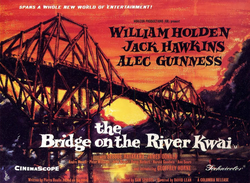 Story of movie The Bridge On The River Kwai :
Story of movie The Bridge On The River Kwai : 